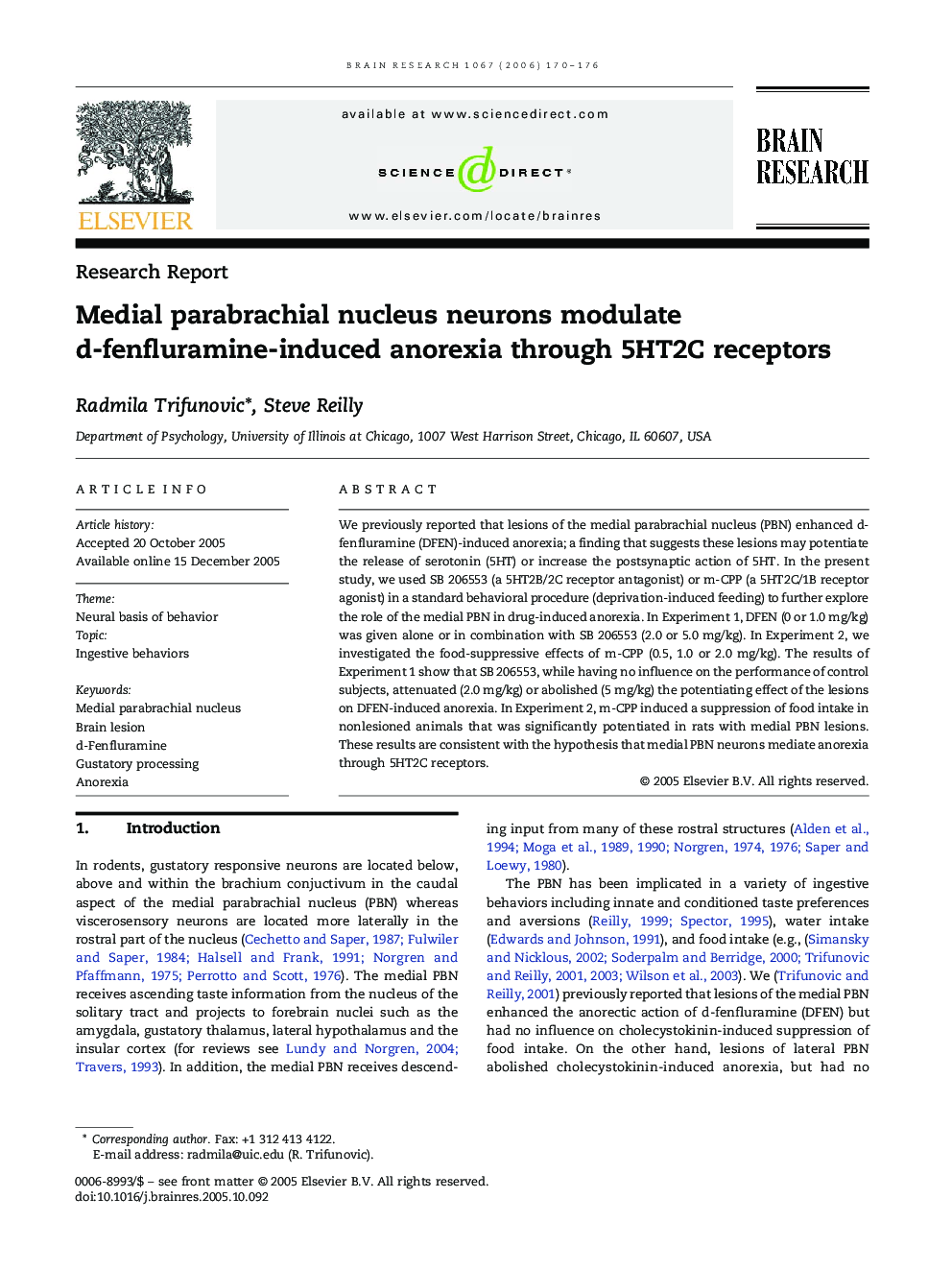| Article ID | Journal | Published Year | Pages | File Type |
|---|---|---|---|---|
| 4333575 | Brain Research | 2006 | 7 Pages |
We previously reported that lesions of the medial parabrachial nucleus (PBN) enhanced d-fenfluramine (DFEN)-induced anorexia; a finding that suggests these lesions may potentiate the release of serotonin (5HT) or increase the postsynaptic action of 5HT. In the present study, we used SB 206553 (a 5HT2B/2C receptor antagonist) or m-CPP (a 5HT2C/1B receptor agonist) in a standard behavioral procedure (deprivation-induced feeding) to further explore the role of the medial PBN in drug-induced anorexia. In Experiment 1, DFEN (0 or 1.0 mg/kg) was given alone or in combination with SB 206553 (2.0 or 5.0 mg/kg). In Experiment 2, we investigated the food-suppressive effects of m-CPP (0.5, 1.0 or 2.0 mg/kg). The results of Experiment 1 show that SB 206553, while having no influence on the performance of control subjects, attenuated (2.0 mg/kg) or abolished (5 mg/kg) the potentiating effect of the lesions on DFEN-induced anorexia. In Experiment 2, m-CPP induced a suppression of food intake in nonlesioned animals that was significantly potentiated in rats with medial PBN lesions. These results are consistent with the hypothesis that medial PBN neurons mediate anorexia through 5HT2C receptors.
